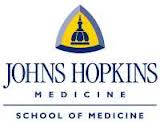A Study to Evaluate the Pharmacodynamic Activity of E2082 in Adult Participants With Photosensitive Epilepsy
| Status: | Recruiting |
|---|---|
| Conditions: | Neurology |
| Therapuetic Areas: | Neurology |
| Healthy: | No |
| Age Range: | 18 - 60 |
| Updated: | 1/26/2019 |
| Start Date: | October 31, 2018 |
| End Date: | June 18, 2019 |
| Contact: | Eisai Medical Information |
| Email: | esi_medinfo@eisai.com |
| Phone: | +1-888-274-2378 |
A Multicenter, Double-Blind, Randomized, Crossover, Single-Dose Study With An Open-Label Treatment Period Evaluating Pharmacodynamic Activity of E2082 in Adult Subjects With Photosensitive Epilepsy
The primary purpose of the study is to assess pharmacodynamic (PD) activity of E2082 as
measured by suppression of epileptic photoparoxysmal response (PPR) in the participant's most
sensitive eye condition in participants with photosensitive epilepsy, compared to placebo.
measured by suppression of epileptic photoparoxysmal response (PPR) in the participant's most
sensitive eye condition in participants with photosensitive epilepsy, compared to placebo.
Inclusion Criteria:
1. Diagnosis and/or history of a PPR on EEG.
2. If currently being treated with antiepileptic drug (AED), up to a maximum of 3
concomitant AEDs is allowed provided that doses must have remained stable for at least
4 weeks (or at least 8 weeks if recently initiated) before screening.
3. Reproducible IPS-induced PPR on EEG of at least 3 points on the SPR scale in at least
1 eye condition (eye closure, eyes closed, eyes open) on at least 3 of the EEGs
performed at screening.
4. Body mass index (BMI) between 18 to 35 kilo gram per square meter (kg/m^2) (inclusive)
and a total body weight greater than or equal to (>=) 45 kilo gram (kg) at screening.
5. Agrees to refrain from strenuous exercise and alcohol consumption during the 24-hour
period before screening and before each treatment day.
Exclusion Criteria:
1. Females who are breastfeeding or pregnant at screening or baseline.
2. Male participants who have not had a successful vasectomy, they and their female
partners not of childbearing potential, or practicing highly effective contraception
throughout the study period and for 28 days after study drug discontinuation. No sperm
donation is allowed during the study period and for 28 days after study drug
discontinuation.
3. History of nonepileptic seizures (example, metabolic, structural, or pseudoseizures)
while on any antiepileptic medication.
4. History of status epilepticus while on any antiepileptic medication(s) within 2 years
before screening.
5. Ongoing or history of generalized tonic-clonic seizures (GTCS) within 6 months before
screening.
6. Participants who had developed a clinical seizure during previous PPR assessment, or
who experiences a clinical seizure during the Screening IPS procedure.
7. Frequent spontaneous background burst or current evidence of proconvulsive activity on
EEG (example, increase in spike-wave activity) at screening.
8. Inability to follow restriction on watching television, or use of any device(s) with
an animated screen (example, computer, video games, tablets, or smart phone) from the
time of arrival at the study center until study procedures are completed for that day.
9. Use of perampanel within 6 weeks before screening.
10. Use of felbamate for less than 2 years or where the dose has not been stable for at
least 8 weeks before Visit 1.
11. Use of vigabatrin within 5 months before screening and/or documented evidence of
vigabatrin associated clinically significant abnormality in a visual perimetry test.
12. Use of benzodiazepines for non-epilepsy related indications. Intermittent use of
benzodiazepines as rescue medication or stable dosage (greater than 4 weeks before
screening) for epilepsy indications is allowed.
13. Concomitant use of cannabinoids.
14. Use of concomitant potent cytochrome P450 (CYP)3A inducers or inhibitors within 4
weeks or 5 half-lives, whichever is longer.
15. Vagus nerve stimulation (VNS) implanted within 5 months or changes in parameter within
4 weeks before screening.
16. On a ketogenic diet for which the diet is not a stable regimen for at least 4 weeks
before screening.
17. Participants with rare hereditary problems of galactose intolerance, the Lapp lactase
deficiency or glucose-galactose malabsorption.
18. A history of prolonged QT syndrome or risk factors for torsade de pointes, or the use
of concomitant medications that cause QT prolongation as demonstrated on screening
electrocardiogram (ECG).
19. Any suicidal ideation with intent with or without a plan within 6 months before or
during screening, and/or any lifetime suicidal behavior.
20. Any psychotic disorder(s) or unstable recurrent affective disorders.
We found this trial at
5
sites
Click here to add this to my saved trials
733 North Broadway
Baltimore, Maryland 21205
Baltimore, Maryland 21205
(410) 955-3182

Johns Hopkins University School of Medicine Johns Hopkins Medicine (JHM), headquartered in Baltimore, Maryland, is...
Click here to add this to my saved trials
Click here to add this to my saved trials
Univ of Pennsylvania Penn has a long and proud tradition of intellectual rigor and pursuit...
Click here to add this to my saved trials
Click here to add this to my saved trials
